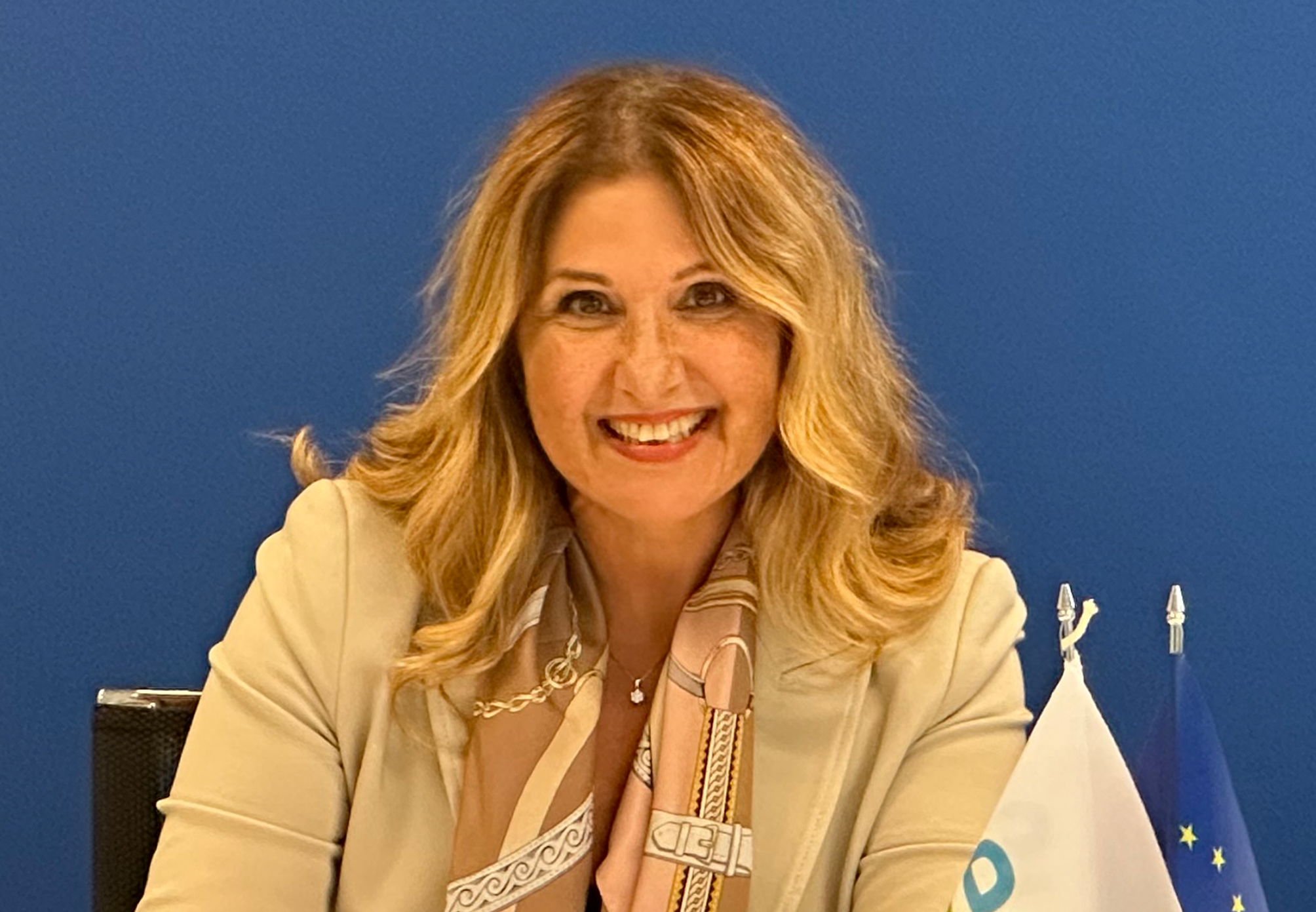Roma, 5 February 2024
Interview with... Mariagrazia La Piscopia
Executive Director of SESAR Deployment Manager
[Cleared n°1 - anno XXI - January 2024]

You were appointed Executive Director of SESAR Deployment Manager. What are the strengths of this composite partnership (ANSP, airlines and airports together with Eurocontrol) and how has the role of the SDM changed over the last 10 years?
I have held the position of Executive Director of SESAR Deployment Manager (SDM) since June 2022 but I have been contributing to the SDM’s activities in various roles since 2014. This has allowed me to follow, and in some cases shape, the evolution of this important European project that aims to modernise and harmonise the technological development of the ATM.
The uniqueness of the SDM lies in its composition: we are the only organisation made up of industry players from the ATM sector (the major airlines, airport operators through ACI and as many as 15 ANSPs) and, from June 2022, EUROCONTROL. This is because we believe that certain ATM-related functionalities can only be successfully implemented at European level with the direct involvement of the industry in both management and governance.
We more or less started from scratch 10 years ago, having to envisage a complex activity of coordination, consultation and stakeholder support, and we also had to overcome some initial scepticism in order to demonstrate the added value of the industry, when activated in first person.
It has certainly been tough but our efforts have been rewarded: €3 billion of investments have been launched and we have coordinated over 100 organisations through more than 350 initiatives, almost 300 of which already completed.
With four full years to go before the final regulatory deadline (2027), more than a third of the technologies under our coordination have been implemented. The intermediate deadlines have almost all been met and delays are constantly monitored with the aim of supporting full implementation as best as we can. Thanks to the continued commitment of the European stakeholders, we are contributing to tangible changes and improvements.
SDM has the EU mandate to coordinate the implementation of CP1: what are the benefits of these technological developments and what are the biggest challenges for the future?
Our task is to coordinate the deployment of Common Project 1 (CP1), a set of technologies whose implementation has become mandatory by law within the EU. CP1 includes elements that improve the efficiency, safety, digitisation and sustainability of ATM operations, with benefits at local, network and passenger level.
The distinctive feature of SDM’s activities is that we are already able to measure the performance benefits achieved. A reduction in delays of more than 115 million minutes, almost 4 million tonnes of CO2 (and 1.2 million tonnes of fuel) saved due to shorter and more efficient routes: all of this - through to 2030 - will save the industry more than €6 billion. And this is only what we have achieved so far. In the long run, this figure will rise to €14 billion, well over 4 times the initial investment.
In the coming years we will have to continue on the same path, providing stakeholders with support for the challenges that lie ahead. Between now and 2027 our priorities are to continue to digitise information flows (via SWIM) and to open the door to Trajectory-Based Operations, helping controllers to manage air traffic growth and airlines to operate more sustainably.
In the European ATM digitisation framework, what is the position of the European ANSPs and ENAV in particular?
CP1 includes mostly ground technologies and so most of the investment (over 70%) is in the hands of ANSPs. I can say that the European providers have responded well, demonstrating the necessary capacity and commitment for these investments. Looking specifically at Italy, ENAV has always played a frontline role in deployment activities, in line with the Group's industrial strategy: Italy leads the way in terms of compliance with CP1 implementation and for some technologies - such as Free Route - ENAV has confirmed its calling as a pioneer of innovation.
You are one of the few women to head a European organisation, what has changed over the years and what is being done to promote diversity and inclusion?
In the last decade there have also been noticeable changes in the ATM industry with substantial improvements made in terms of the diversity of resources.
But there is still a long way to go. Despite the progress that has been made, there is a significant gender gap at management level - even in Europe - with very few women in senior or leading roles. I see this first hand when I participate in the High Level Group of the Single European Sky, attended by the directors of all the major European ATM institutions: often I have been the only woman present. And this is happening despite the fact that female representation in the industry, especially among the younger generations, is steadily increasing.
I think that a more inclusive organisation which represents all points of view, especially those of groups who until now have remained in the background, is not simply a goal to be pursued for ethical reasons but a discriminating factor for achieving better, more efficient and more competitive organisations with greater prospects for growth.


